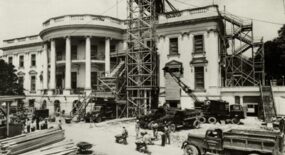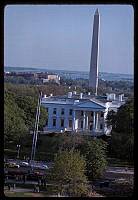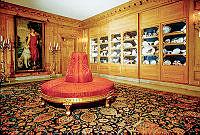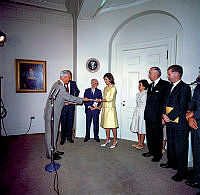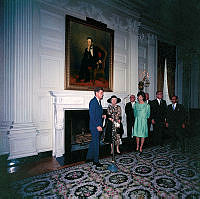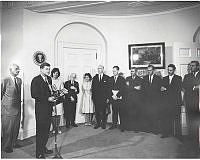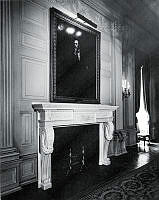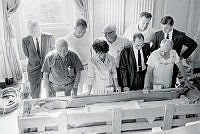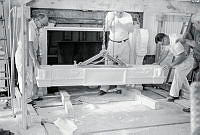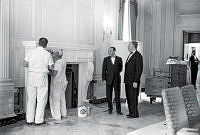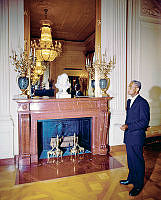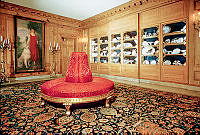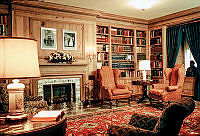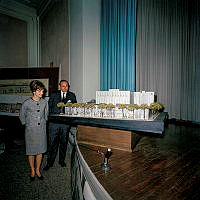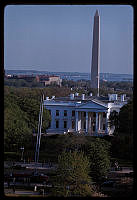Rubenstein Center Scholarship
A Transatlantic Journey
Sandham Symes in America and Canada, 1841
Sandham Symes (1807-1894) was an Irishman and architect by profession who was noted for the design of many well-known buildings in Ireland. He was also an accomplished artist and well-travelled man who held a variety of eclectic interests.
One of Symes finest collections of drawings and paintings that form part of this legacy are those originating from the time he spent in America and Canada in 1841. These works are the subject of a new book, written by myself and R. Gifford.
A Transatlantic Journey: Sandham Symes in America and Canada reproduces this collection of works, alongside a commentary of Symes and the places which he visited. These works have been in private family ownership since 1841. It is of great significance that they are now being published and can be shared with an interested readership, whether that readerships focus is on architecture, art, Irish studies, or American and Canadian history. Indeed, they have an appeal for readers with the widest of interests, given what they depict.
Within this collection, Symes visually captured his experiences of travelling from Ireland to New York, as well as his time spent in various locations in America and Canada including New York, Philadelphia, Baltimore, Washington, the Hudson River, Albany, and Niagara Falls, various Canadian residences of friends and family, Montreal and Quebec. This blog piece will focus specifically on his works from Washington.
Sandham Symes appears to have been a fascinating character. As one of Symes relatives, Glascott Symes, describes: Despite walking with a crutch and stick from a childhood injury or birth defect, he inspected the walls of Dublin harbour in a diving bell and made a hot-air balloon ascent from the Rotunda gardens, Dublin in 1848, an experience which few people at that time could claim to have been familiar with. He embodied a keen sense of adventure, travelling widely and experiencing new situations. The works included within A Transatlantic Journey are a very clear expression of his personality.
When Symes reached Washington in early June of 1841, he managed to depict four iconic scenes of American political life, some of which were in their early stages of development, with the Treasury Department building still under construction at the time.

Sketch of the White House from the west by Symes who omitted James Hoban's distinctive lunette window on the west facade, 1841.
The White House (entitled The Presidents House) is dated June 1, 1841. His drawing of this iconic building includes a basic plan of the outlay of the house, including the Dwelling and Law Offices. This could, of course, indicate that Symes had been inside the White House. Lending credence to this is the fact that there is in private family ownership what appears to be a signed etching of President John Tyler, which was found inside a sealed pocket in Symes album containing his 1841 works, and can be seen below. It was not unusual at that time for prominent visitors to gain an audience with the president. In fact, earlier in the century in 1804, Symes fellow Irishman, the poet Thomas Moore (1779-1852), met with President Thomas Jefferson.

Etching of President John Tyler, found in Symes' album.
Symes also drew the Treasury building, designed by Robert Mills and still under construction at the time. Within this drawing, the Treasury's columns are perhaps the most striking aspect of the piece.

The Treasury building under construction, 1841.
The final building in Washington that Symes sketched was the Capitol Building, and two wonderfully detailed drawings exist of it from different elevations: from the East and from the W[est], both dated June 2, 1841. In the latter drawing, the American flag can be seen to fly prominently. Perhaps one reason why Symes was interested in the White House, Treasury and the Capitol Building is due to the fact that James Hoban, an architect who was born in Ireland, was involved in the construction of all three buildings.

The east front of old Capitol, 1841.

The west front of the old Capitol, 1841.
As all of the pieces from Symes' 1841 journey document an early stage in the history of Canada and America, and were created by an Irishman, it is hoped that their publication will stimulate further interest in Symes, and what he depicted, on both sides of the Atlantic and, indeed, further afield. Sandham Symes was a significant and fascinating figure, a talented artist who achieved much success during his career, and we need to appreciate the legacy of the important and varied body of work which he left behind.





